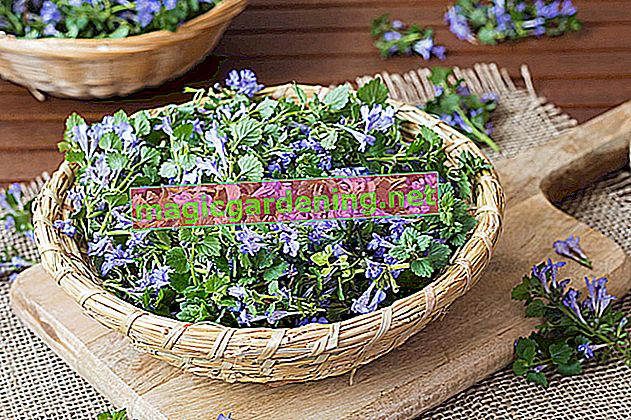
Only fill areas? Boring!
You can get a lot more out of ground cover than just greening bare areas that are easy to maintain. The real garden crack combines a few other usefulnesses with this mundane main purpose. On the one hand, there is the possibility of protecting exposed slopes from erosion. Or automatically keeping the soil under bushes and trees free of weeds, moisturized and rich in nutrients. Many ground cover plants with pretty flowers and / or an attractive leaf structure also have a high ornamental value.
also read
- Freezing herbs - the best alternative to fresh
- These herbs are licensed for balcony plants - a selection
- Frozen soup greens - practical and always at hand
A positive side effect that is not immediately associated with ground cover is the seasoning for the kitchen. Some low perennials, which are often used for filling areas or for rock gardens, are also tasty herbs - so why not kill two birds with one stone with pragmatic greenery and create a supply of spices at the same time?
Note location
The use of herb variants is particularly suitable for ground cover planting in the garden - because if you want to benefit from the fresh spice in daily cooking, you don't have far to harvest. When selecting the herb ground cover, the site conditions of the area to be greened must of course be considered. Is it shady or sunny? Is the soil rather poor or rich in nutrients and humus? Here are a few suggestions for herb ground cover for different locations:
for sunny locations:
- Thyme: classic Mediterranean flavor, many different varieties
- Iced cabbage: as a crunchy salad garnish
- Nasturtium: spicy salad addition, buds and flowers also edible
- Bachbunge: addition of salad, spinach substitute, anti-inflammatory, blood-purifying
- Gundermann / Gundelrebe: as a salad spice
- Himalayan knotweed: for anti-inflammatory teas
- Dost / oregano: fine, Mediterranean flavor
for shady locations:
- Wild garlic: green, fresh garlic substitute, for salads and pestos
- Woodruff: for May punch, syrup, liqueur, pudding
- Mint: for tea, as a salad herb, for extracts and oils
like lean soils:
- thyme
- Ice herb
- Dost / oregano
need nutrient-rich soils
- Wild garlic
- mint
- Woodruff (humus)
Many of the herb ground covers mentioned have another advantage in the garden: some are so aromatic that they appeal to the sense of smell as you walk past. The wild garlic in particular exudes its fine, leeky aroma and thyme, especially when it is grown over a large area, can create a wonderfully spicy scent when sitting on the terrace.








